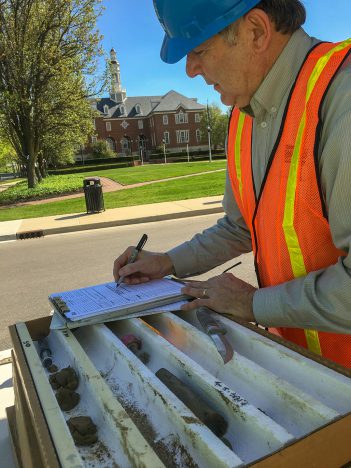Hydrogeologist Dan Kelleher and his Midwest Geoscience Group partner, Tim Kemmis, have made a timely determination.

Kelleher said recent drilling in Carmel’s developing Midtown has revealed sediment layers from ancient glaciations that are older than 20,000 years.
“The deep sequence of deposits tell a story about past continental-scale ice sheets advancing and retreating multiple times across modern-day Carmel,” Kelleher said. “The remnant deposits are today recognized as deep sand and gravel aquifers buried and protected by thick mixtures of clayey sediments.”
Kelleher, a geologist who specializes in ground water, will give a presentation, called the “Geology of Carmel,” at 7 p.m. May 15 at the Carmel Clay Public Library. A question and answer session will follow.
“I will present the geologic findings beneath Midtown Carmel and reveal the story the sediments are telling about past local glaciations,” Kelleher said,
Kelleher said there’s been a huge interest in the project from the Mayor’s office, the Carmel Clay Historical Society and the city’s engineering department.
“Carmel’s redevelopment commission is the one that led me to this project,” Kelleher said.
Kelleher, a Carmel resident, and Kemmis are co-founders of Carmel-based Midwest Geoscience Group. Kelleher is the group’s president. Kemmis has a doctorate in glacial sedimentology.
“We went out and we looked at sedimentary sequence to take the mystery out of the subsurface,” Kelleher said. “We collected the same kind of engineering data that was collected in the past, but we didn’t have to hope that we were going to find trends. It was without question because the sediment sequence is quite predictable. We took our data and correlated it regionally with the Indiana Geological Survey.”
Kelleher said the project showed the same sedimentary sequence over a stretch of more than a mile.
“It will optimize any drilling program and any engineering data collected,” Kelleher said. “It will make every program from here on out more efficient. For the very first time in the city’s history, we have certainty as far as subsurface conditions. That benefits the city in lots of ways for future engineering projects.”


